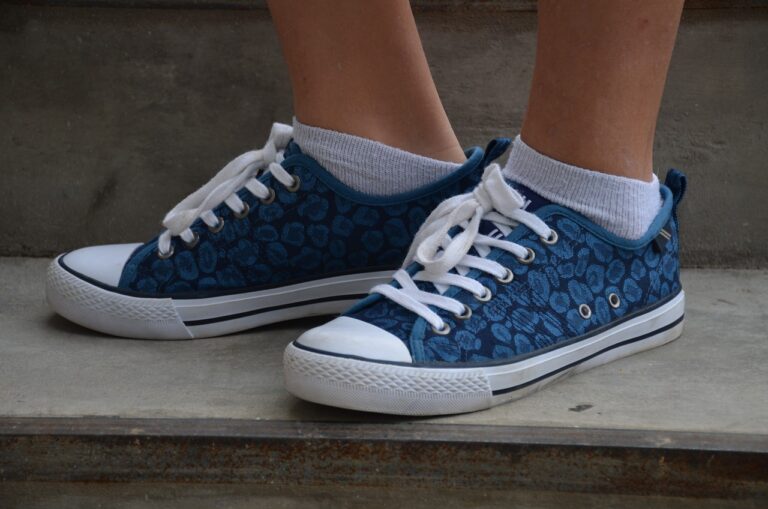Fashion and Climate Action: Sustainable Fashion Solutions
In recent years, the fashion industry has come under scrutiny for its negative impact on the environment. From the excessive use of water in manufacturing processes to the high levels of pollution generated by clothing production, the fashion industry is a significant contributor to climate change. As consumers become more aware of these issues, there has been a growing demand for sustainable fashion solutions that prioritize environmental and social responsibility. In this article, we will explore the concept of sustainable fashion and discuss some innovative solutions that can help mitigate the environmental impact of the fashion industry.
What is Sustainable Fashion?
Sustainable fashion, also known as eco-friendly or ethical fashion, refers to clothing designed and produced in a way that minimizes environmental impact and maximizes social responsibility. This can include using eco-friendly materials, reducing waste in the manufacturing process, and ensuring fair labor practices throughout the supply chain. Sustainable fashion aims to create clothing that is both stylish and environmentally conscious, without compromising on quality or design.
Benefits of Sustainable Fashion
There are numerous benefits to embracing sustainable fashion practices. Not only does it help reduce the negative impact of the fashion industry on the environment, but it also promotes social responsibility and ethical practices. By choosing sustainable fashion options, consumers can support brands that are committed to making a positive difference in the world. Additionally, sustainable fashion often promotes innovation and creativity, as designers are challenged to find new and innovative ways to create clothing that is both stylish and sustainable.
Sustainable Fashion Solutions
1. Use of Sustainable Materials
One of the key components of sustainable fashion is the use of eco-friendly materials. This includes organic cotton, bamboo, hemp, and recycled fabrics. By opting for materials that are less harmful to the environment, clothing manufacturers can significantly reduce their carbon footprint and minimize waste. Brands such as Patagonia and Eileen Fisher have been leaders in using sustainable materials in their clothing lines, setting a positive example for the rest of the industry.
2. Recycling and Upcycling
Another sustainable fashion solution is recycling and upcycling clothing. This involves taking old or used clothing and turning it into something new and stylish. By repurposing materials that would otherwise end up in a landfill, clothing manufacturers can reduce waste and create unique, one-of-a-kind pieces. Brands like Reformation and Stella McCartney have been pioneers in the upcycling movement, showing that recycled clothing can be just as fashionable as new clothing.
3. Ethical Supply Chain Practices
Ensuring fair labor practices throughout the supply chain is another important aspect of sustainable fashion. This includes paying fair wages, providing safe working conditions, and supporting local communities. By working with suppliers who prioritize ethical practices, clothing brands can help improve the lives of garment workers and promote social responsibility. Brands like People Tree and Alternative Apparel have made a commitment to ethical sourcing and production, setting a positive example for the industry.
4. Minimal Waste Production
Reducing waste in the manufacturing process is essential for sustainable fashion. This can be achieved through careful design and production techniques that minimize the amount of material that goes to waste. By implementing practices such as zero-waste pattern cutting and on-demand production, clothing brands can significantly reduce their environmental impact and create clothing that is both stylish and sustainable. Brands like Tonl頡nd Zero + Maria Cornejo have been champions of minimal waste production, showing that fashion can be both eco-friendly and fashionable.
5. Collaborations with Sustainable Designers
Collaborating with sustainable designers is another way for fashion brands to promote eco-friendly practices. By partnering with designers who prioritize sustainability and environmental responsibility, clothing brands can create unique and innovative collections that appeal to eco-conscious consumers. Collaborations such as H&M’s Conscious Exclusive collection and Adidas x Stella McCartney have shown that sustainable fashion can be both stylish and marketable, challenging the misconception that eco-friendly clothing is not fashionable.
6. Consumer Education and Awareness
Lastly, educating consumers about the importance of sustainable fashion is key to promoting eco-friendly practices. By raising awareness about the environmental impact of the fashion industry and highlighting the benefits of choosing sustainable clothing options, brands can inspire consumers to make more conscious purchasing decisions. Through social media campaigns, educational workshops, and partnerships with sustainability organizations, clothing brands can engage with consumers and empower them to make a positive impact through their fashion choices.
FAQs
1. What is the difference between sustainable fashion and fast fashion?
Sustainable fashion focuses on creating clothing that is environmentally conscious and socially responsible, while fast fashion prioritizes cheap and trendy clothing produced quickly and with little regard for the environment or workers’ rights.
2. How can I support sustainable fashion as a consumer?
You can support sustainable fashion by choosing clothing made from eco-friendly materials, shopping from brands that prioritize ethical practices, and recycling/upcycling clothing to reduce waste.
3. Are sustainable fashion options more expensive?
While sustainable fashion options may be more expensive upfront, they often offer better quality and longevity, leading to cost savings in the long run. Additionally, supporting sustainable fashion helps promote eco-friendly practices and support ethical brands.
4. What are some easy ways to incorporate sustainable fashion into my wardrobe?
You can incorporate sustainable fashion into your wardrobe by shopping at thrift stores, swapping clothes with friends, and choosing clothing made from organic or recycled materials. Additionally, you can upcycle old clothing into new pieces or support sustainable fashion brands that align with your values.
By embracing sustainable fashion solutions, the fashion industry can help reduce its negative impact on the environment while promoting social responsibility and ethical practices. Through innovative approaches such as using sustainable materials, recycling/upcycling clothing, and supporting ethical supply chain practices, clothing brands can create fashion that is both stylish and sustainable. As consumers become more aware of the importance of sustainable fashion, the demand for eco-friendly clothing options will continue to grow, leading to a more sustainable and ethical fashion industry overall.







